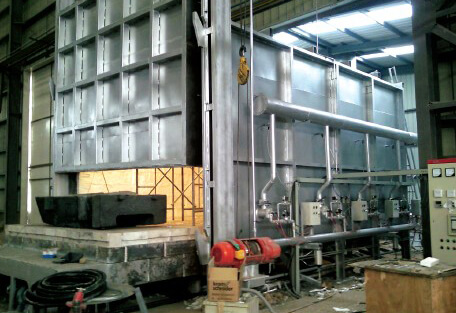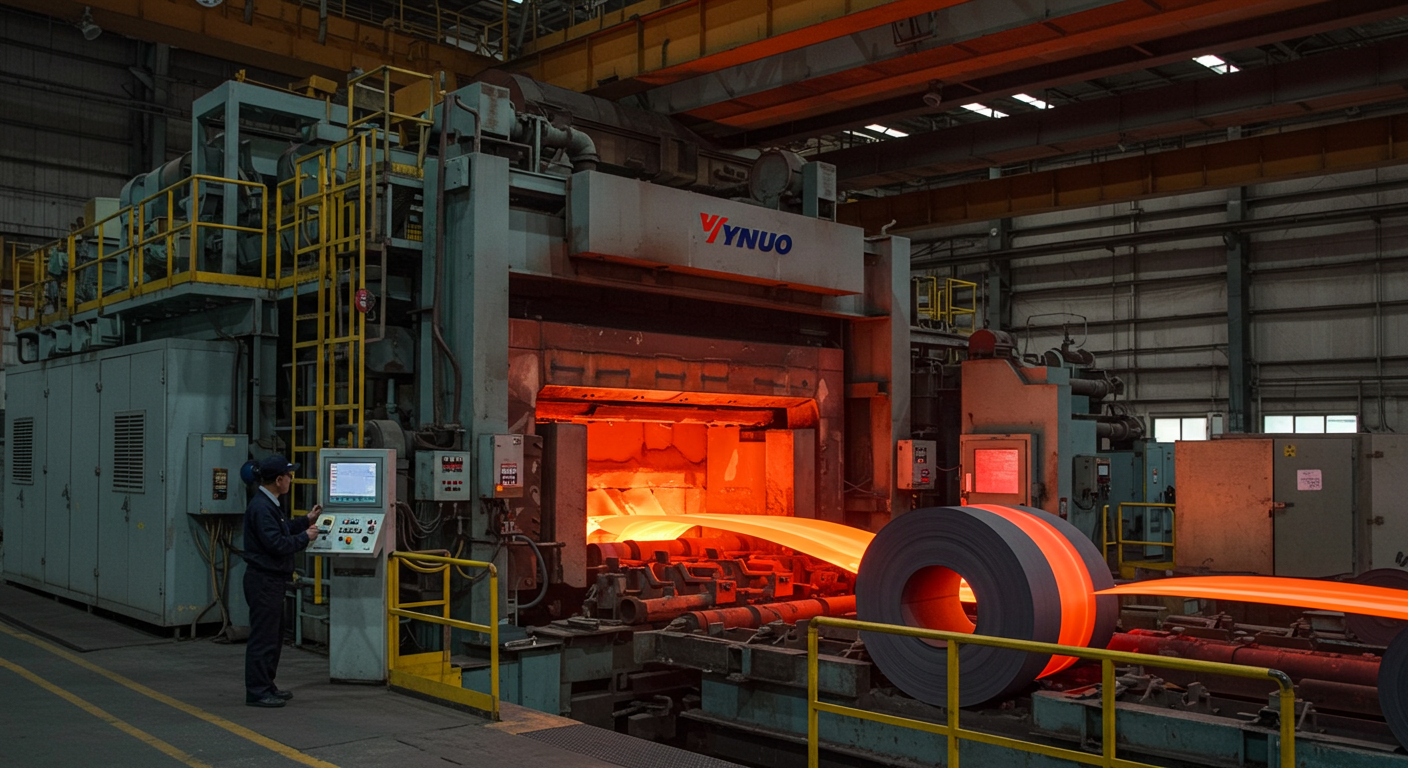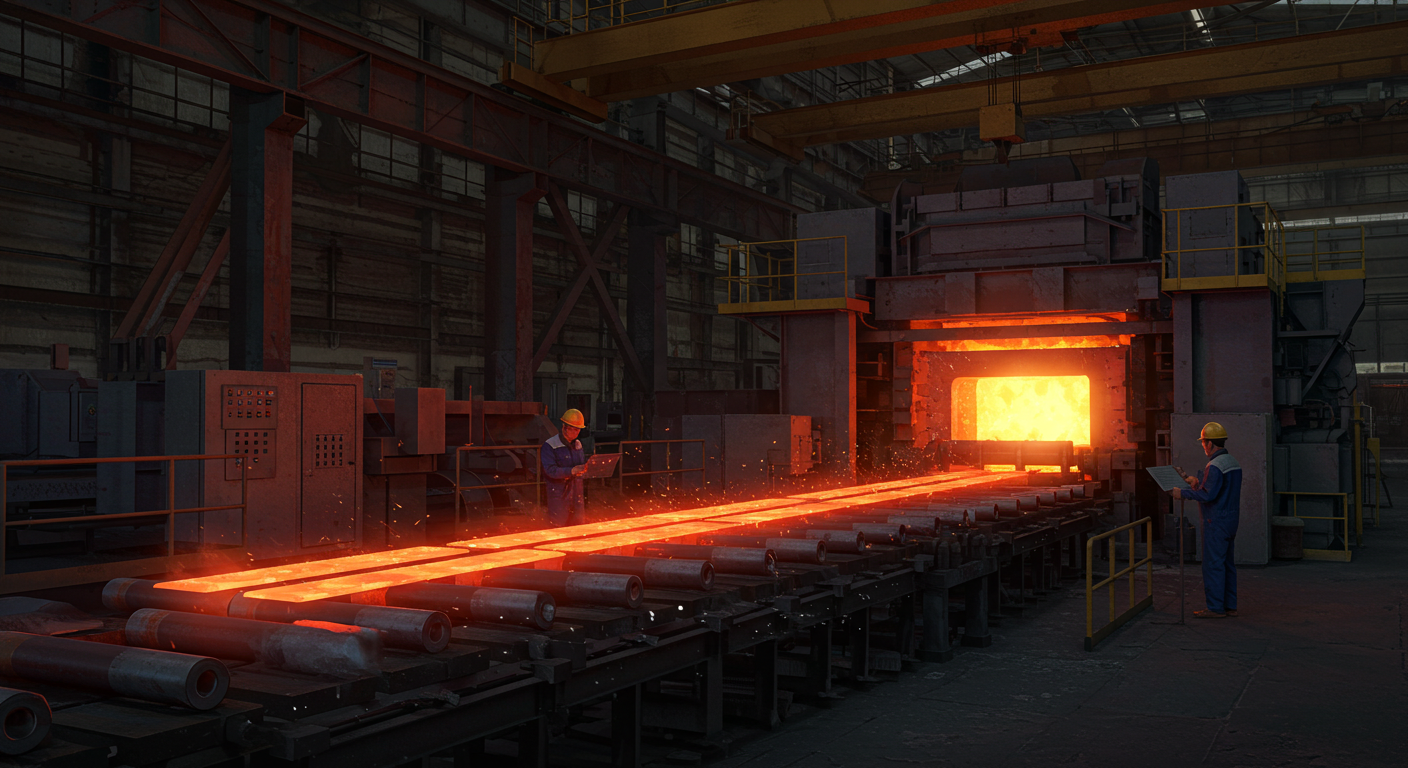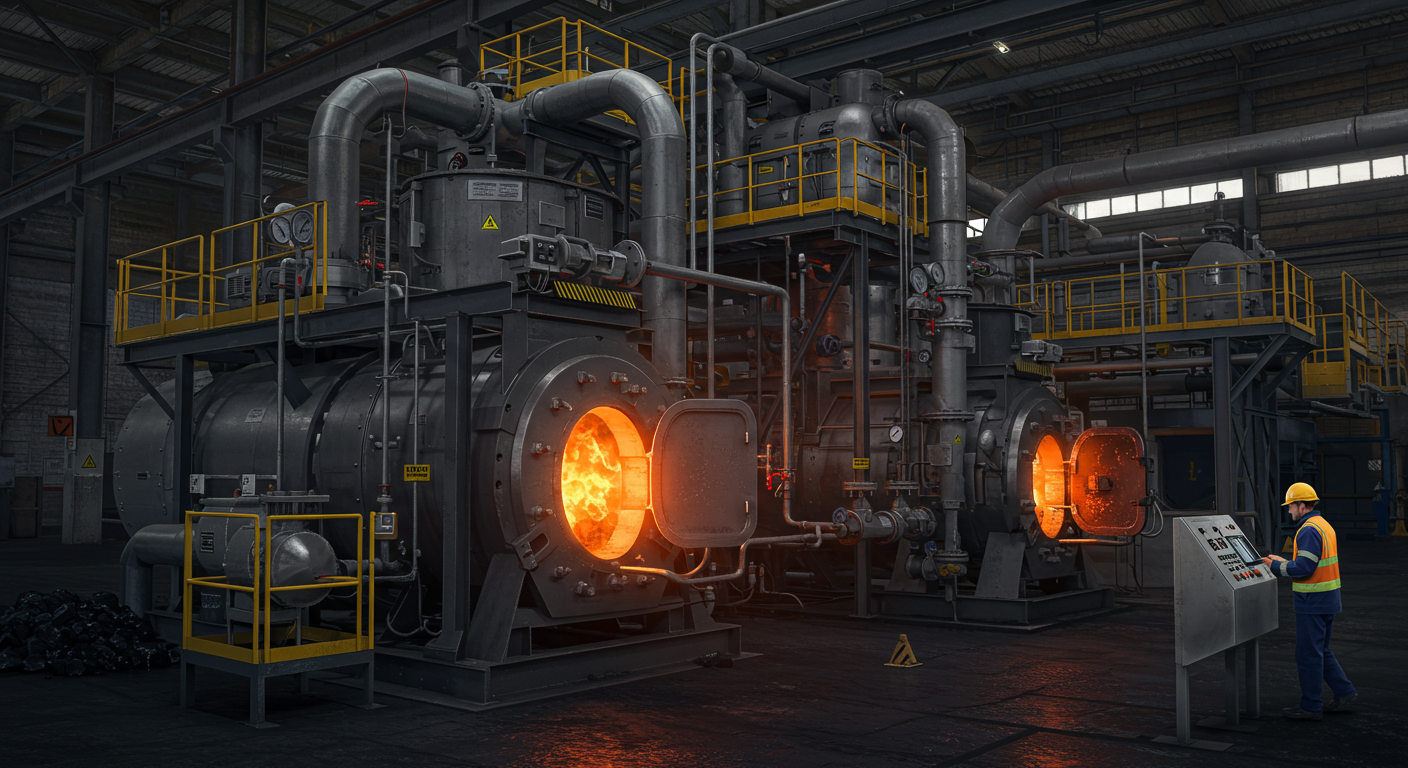In the quest for sustainable and energy-efficient manufacturing practices, industries around the world are embracing innovative solutions that minimize their carbon footprint. One such advancement is the gas-fired heat treatment furnace, a cutting-edge technology developed by manufacturers like JiangSu YiNuo Thermal Energy Technology Co., Ltd.
Gas-fired heat treatment furnaces offer exceptional precision and control over the heat treatment process. The integration of advanced temperature control systems, along with precise atmosphere regulation, allows for consistent and repeatable results, meeting stringent metallurgical specifications. This blog explores the key features and benefits of gas-fired heat treatment furnaces, shedding light on their role in enhancing energy efficiency, reducing emissions, and promoting sustainable manufacturing practices.

Understanding Gas Fired Heat Treatment Furnaces
1.1 Definition and Significance
A gas-fired heat treatment furnace is a specialized industrial equipment designed to heat and cool metallic components to achieve desired material properties. This process alters the structure of metals, enhancing their hardness, strength, and durability, while minimizing distortion and residual stress.
1.2 Key Components and Functionality
Gas-fired heat treatment furnaces consist of several essential components, including the heating system, control panel, insulation, and atmosphere control. The heating system typically utilizes natural gas or propane as a fuel source, providing precise temperature control for various heat treatment techniques, such as annealing, tempering, and quenching.
Manufacturing Process: Gas Fired Heat Treatment Furnace
2.1 Design and Engineering
The manufacturing process of gas-fired heat treatment furnaces begins with thorough design and engineering. Skilled engineers at JiangSu YiNuo Thermal Energy Technology Co., Ltd. analyze customer requirements and develop furnace designs that align with specific heat treatment needs. These designs consider factors like temperature range, heating capacity, furnace size, and energy efficiency.
2.2 Material Selection and Fabrication
Selecting high-quality materials is crucial to ensure the durability and performance of gas-fired heat treatment furnaces. Manufacturers like JiangSu YiNuo Thermal Energy Technology Co., Ltd. meticulously choose heat-resistant alloys and refractory materials capable of withstanding extreme temperatures and thermal cycling. The fabrication process involves precision cutting, welding, and assembling the components to create a robust and reliable furnace structure.
2.3 Integration of Heating System and Control Panel
The heating system and control panel form the heart of a gas-fired heat treatment furnace. Advanced burner technology is employed to efficiently combust natural gas or propane, producing a controlled and uniform heat source. The control panel integrates temperature sensors, thermocouples, and sophisticated software algorithms, enabling precise temperature regulation and optimal heat treatment outcomes.
2.4 Insulation and Atmosphere Control
Insulation plays a vital role in minimizing heat loss and ensuring energy efficiency. State-of-the-art insulation materials, such as ceramic fiber and refractory bricks, are carefully installed to maintain a stable internal temperature. Additionally, gas-fired heat treatment furnaces may incorporate atmosphere control systems, allowing for the creation of specific gas environments (e.g., nitrogen or hydrogen) to prevent oxidation and achieve desired material properties.
Enhancing Energy Efficiency: Gas Fired Heat Treatment Furnace
3.1 Advanced Combustion Technology:
Gas fired heat treatment furnaces employ advanced combustion technology to achieve remarkable energy efficiency. By optimizing the combustion process, these furnaces can achieve higher thermal efficiencies, reducing energy consumption and operating costs. The combustion system ensures precise control over the air-to-fuel ratio, resulting in cleaner and more efficient burning of the fuel, thereby maximizing energy conversion.
3.2 Superior Heat Transfer Efficiency:
Gas-fired furnaces utilize innovative design features to enhance heat transfer efficiency. These furnaces are equipped with highly efficient heat exchangers, which facilitate the transfer of heat from the combustion gases to the workload. The improved heat transfer capability ensures faster and more uniform heating, reducing cycle times and enhancing overall productivity.
Reducing Carbon Footprint: Gas Fired Heat Treatment Furnace
4.1 Emissions Reduction:
One of the key advantages of gas-fired heat treatment furnaces is their lower environmental impact. Compared to traditional fossil fuel-powered furnaces, gas-fired furnaces emit significantly fewer greenhouse gases and pollutants. By utilizing cleaner fuels and implementing advanced combustion technologies, these furnaces contribute to a substantial reduction in carbon dioxide (CO2), nitrogen oxide (NOx), and sulfur oxide (SOx) emissions. This not only helps meet regulatory requirements but also aligns with the global commitment towards sustainable manufacturing.
4.2 Waste Heat Recovery:
Gas-fired furnaces can incorporate waste heat recovery systems, further enhancing their environmental credentials. These systems capture and utilize the waste heat generated during the heat treatment process, effectively converting it into usable energy. By recovering and recycling waste heat, industries can significantly reduce their reliance on primary energy sources, thereby minimizing both their energy costs and carbon footprint.
Promoting Sustainable Manufacturing: Gas Fired Heat Treatment Furnace
5.1 Renewable Energy Integration:
Gas-fired heat treatment furnaces can be integrated with renewable energy sources to achieve even greater sustainability. By combining these furnaces with solar panels, wind turbines, or other renewable energy systems, manufacturers can reduce their dependence on non-renewable energy sources and contribute to a greener future. This integration allows industries to tap into clean, renewable energy while maintaining the efficiency and reliability of their heat treatment processes.
5.2 Energy Management Systems:
To optimize energy consumption and promote sustainable manufacturing practices, gas-fired heat treatment furnaces can be integrated with advanced energy management systems. These systems monitor and analyze energy usage, allowing manufacturers to identify areas of improvement and implement energy-saving measures. By adopting smart energy management practices, industries can further enhance their operational efficiency and minimize their environmental impact.
Conclusion:
Gas-fired heat treatment furnaces have emerged as a game-changer in the field of industrial manufacturing. With their superior energy efficiency, reduced emissions, and alignment with sustainable practices, these furnaces offer a compelling solution for industries seeking to optimize their operations while minimizing their environmental impact. As manufacturers like JiangSu YiNuo Thermal Energy Technology Co., Ltd. continue to innovate and refine this technology, gas-fired heat treatment furnaces pave the way for a greener and more sustainable future in the realm of industrial heat treatment.







